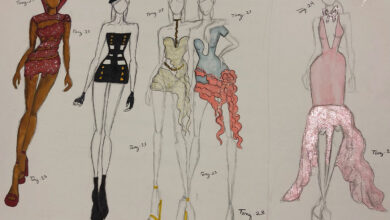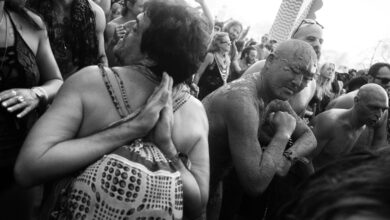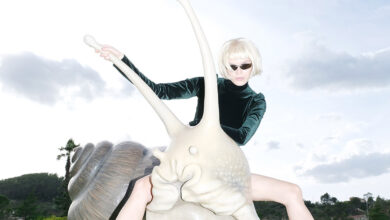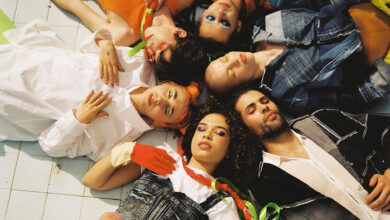Shady El-Noshokaty and Ahmed Badry, artists and friends of the late Ahmed Basiony, share their views with Zoot Magazine on the first work of the post-Mubarak age presented at the Venice Biennale.
Text by Anna Battista

“NO to poverty; NO to unemployment; NO to torture,” reads one of the banners carried by the crowd of protesters gathered in Cairo’s Tahrir Square in January. This could be an image taken from a news programme, instead it’s a clip from footage filmed by multimedia artist Ahmed Basiony with his digital and phone camera during the protests that brought down Hosni Mubarak’s regime. Sadly, Basiony died shortly after filming these images, shot by the snipers of the Egyptian Police Forces on the night of 28th January. Basiony’s last work is now showcased in a special installation inside the Egyptian Pavilion at the Venice Biennale.

Born in 1978, Ahmed Basiony was deemed as one of the most important contemporary Egyptian artists. A professor and a talented painter, Basiony explored in his work the possibilities offered by multimedia installations launching radical audio-visual projects.
Entitled “30 Days of Running in the Place” and curated by Aida Eltorie and by Executive Curator Shady El Noshokaty, the installation at the Venice Biennale shows on five screens clips from a previous project by Basiony juxtaposed to images of the January protests. In his former project, Basiony attached sensors to his body and his shoes and wirelessly transferred to a computer the amount of sweat and the number of steps he produced, projecting them onto a screen via a graphic grid. The project – a metaphor for three decades of life, that is thirty years of “wasted energy” under Mubarak’s regime – takes a new meaning when compared to the images of the crowd of young people protesting in Tahrir Square, hinting at movements of energy and physical and social consumption
The Egyptian Pavilion at this year’s Venice Biennale can therefore be seen as a tribute to a pioneering artist and, being the first pavilion of the post-Mubarak age, it also proves that, while still in turmoil, Egypt may get back to being the main focus of Arabic culture, thanks to a generation of young artists developing a new language that mixes audio, visual and electronic communications.
Zoot Magazine: When did you start working on this project?
Shady El Noshokaty: When Ahmed died we were preparing a big event that was going to take place in May in Cairo and I was also working on creating an archive of his work. Then everything dramatically changed and, since we felt Ahmed’s dream was being at the Venice Biennale, we submitted to the Biennale jury a project and they accepted it. It was extremely difficult to make it come true since we had two Ministers of Culture in two months and not much budget, so in the end we decided to present the project in a slightly different format and left the material as it were. We wanted the material to speak for itself so we didn’t synchronise it or edit it, but decided to keep it like that to avoid interfering with Ahmed’s vision.
Zoot Magazine: In which way was Ahmed Basiony a true pioneer in his art projects?
Shady El Noshokaty: His work was extremely fresh and rare in Egypt because, before him, we didn’t have any educational institutions offering courses or workshops about experimental or digital audio-visual art and multimedia. Ahmed launched workshops in open source programming and industrial technology and challenged his audience and himself as well, since he came from a strictly visual arts background. Last December he did for example a project entitled “ASCII doesn’t speak Arabic” for the Cairo Documenta exhibition and used open source programming and electronic devices for a multimedia work based on a dialogue between body language and verbal communication that involved each member of the audience.
Zoot Magazine: Do you feel that this year the Biennale has got a political edge also thanks to specific projects like the ones you presented?
Ahmed Badry: Political views always reflect on art and I guess there is something very political about this year’s Biennale, especially if you compare it to the latest one. That’s mainly because the world has changed and there is a new power coming from Arabic countries that it’s being passed onto European countries. It’s interesting to see how, in the past, specific nations would influence the world, but now things have changed and it’s about people coming up with the strongest ideas and inspiring with their power other countries. The revolution in Egypt for example has the potential of transforming not only our nation but the entire world.
Zoot Magazine: What’s the art scene like in Egypt at the moment?
Ahmed Badry: Art always had a very small audience in Egypt and while in some cases writers and filmmakers were more controlled, in others the authorities struggled to understand the message of specific artists. So art was never that effective and never had a large audience, but things are changing now.
Zoot Magazine: Are you planning further events in Egypt to pay homage to Ahmed Basiony?
Shady El Noshokaty: I’ve run workshops together with Ahmed to teach students new media and creative practice and I’m currently teaching in the Visual Art Department of the American University in Cairo, so I will make sure his memory is preserved. Ahmed was one of the partners in my foundation www.noshokatyfoundation.com that was created to prompt young artists to experiment with alternative media practices. Inside the foundation there is a research centre for contemporary arts and electronics for artists sharing workshops in sound and electronics and interactive work using open source programming and I would like this centre to have Ahmed’s name. Besides, when the Biennale closes, this installation will move to Cairo and there will also be a retrospective dedicated to Ahmed Basiony.
Photos by Magdi Mostafa; Copyright the Ahmed Basiony Family








